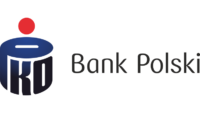According to a 2021 study by Alior Bank, nearly half of Poles were willing to communicate with a virtual assistant. By the end of June 2023, Polish banks had accumulated nearly 15 million customers categorized as “mobile-only," as reported by Puls Biznesu. A growing number of customers are choosing online contact over in-person or phone communication.
This trend indicates the necessity for banks to expand their communication channels. We are currently focusing on one such channel – chat – in collaboration with PKO Bank.
This channel is essential to address customer needs and, concurrently, to lower expenses and alleviate the workload on agents (e.g., by automating repetitive conversations).
While we are already progressing with the third stage, this case study pertains to the first two stages – a chat designed for non-logged-in customers and launching chat contextually in the loan purchase and onboarding process.
Our team developed the chat with the customer's perspective in mind.

Project in numbers:
The bank aimed to facilitate direct communication between customers and agents or the bot on the information site and while completing application forms, like those for new account openings or loans.
Eliminating friction points and granting customers access to information through interaction with the bot or a bank agent was a key objective.
It was crucial for the component to be integrated into specific processes and within the iPKO transaction service.
The bank envisioned implementing an intuitive chatbot driven by machine learning, capable of interpreting behavior and contextually responding when customers require assistance.
The bank sought the ability to customize the appearance of the chat interface, as the existing native ECE plugin did not allow such modifications.
On the one hand, the chat was to be front-end independent across channels, and on the other hand consistent and in line with the bank's style guide. Its main task was to centralize communication. A single implementation was planned for the info site, application processing system, transaction system, and mobile interfaces.
We demonstrated to the bank the feasibility of separating the front-end part from the functional part. It is critical if the bank needs to change the front end in any of its channels. The microfrontend approach proved to be our competitive advantage.
Our team developed a chat Minimum Viable Product (MVP) accessible to customers in various contexts, ensuring swift and efficient assistance in troubleshooting issues encountered while completing applications.
At present (Q4 2023), we are executing the third phase of our project, incorporating a bot and chat functionality within sales processes. Additionally, we're integrating a chat for non-logged-in customers.
On Eximee's side, the project had a StarFleet team led by a Product Owner, Piotr Kolinski. The team on the bank's side consisted of an analyst, IT Product Owner, Business Product Owner and administrators.
The project was divided into 3 phases.
Phase I regarding the internal Proof of Concept was completed in 4 weeks. It assumed making the chat available on www.pkobp.pl. It passed friends and family tests and was put into production in August 2023.
We implemented the so-called active engagement. It means the chat becomes available to users who have progressed beyond the initial form page and have made a specific number of errors, for instance, three. Only at that point, during instances of friction, the chat displays a message to ask the user if they need help:
The chat has been integrated into Eximee as a web component. This integration allows the following:
Eximee application designers can define conditions for displaying the chat. Examples of triggers for the presentation of a chat are:
The solution was tested using the family and friends method. It has been available to customers since August 2023.
Implemented in Q4 2023. We will share a case study soon.
The web component communicates with a dedicated back end managed by the bank. This back end is connected to both a chatbot application and a Cisco-ECE application utilized by agents.
The chatbot is embedded into the info site (pkobp.pl) and Eximee applications tailored for potential customers (prospects). We also managed the integration of the chat with a machine learning-driven bot provided by a third-party supplier.
Furthermore, to enable informing customers about the availability of agents, we integrated the platform with the bank's systems responsible for managing information related to agent availability.
The collaborative effort between the Eximee and bank teams resulted in the development of an intuitive chat system that utilizes machine learning to interpret customer intentions. The chat responds contextually to customer behavior. It activates, for example, when a customer:
Customers can swiftly connect with bank employees via the chat interface. If consultants are unavailable, customers have the option to fill out a contact form and request a response.
The chat functionality allows users to download a PDF containing a record of their conversation. This record serves various purposes, such as an attachment in subsequent communications or as a note.
The bank gained an additional communication channel to serve more customers.
Automation of some parts of communication (e.g., a chatbot starts a conversation) means less work on the part of the bank's agents.
Engaging with either the bot or an agent results in customers being better informed, increasing the likelihood of successfully completing applications. It leads to a decrease in abandoned forms and an overall improvement in conversion rates.
Furthermore, the bank has gained:
Make an appointment for a discovery meeting and find out how we can help you.